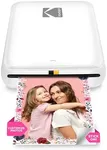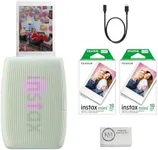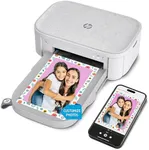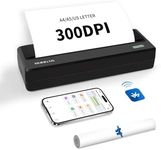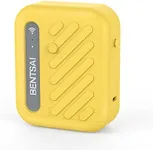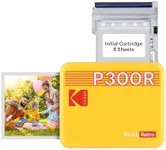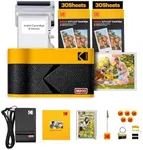Buying Guide for the Best Zink Printer
When choosing a Zink printer, it's important to consider several key specifications to ensure you get the best fit for your needs. Zink printers, which use Zero Ink technology, are great for instant photo printing without the need for ink cartridges. Understanding the key specs will help you make an informed decision and get the most out of your purchase.Print QualityPrint quality refers to the resolution and clarity of the printed photos. This is important because higher print quality results in sharper and more detailed images. Print quality is usually measured in dots per inch (DPI). A higher DPI means better quality. For casual use and small prints, a DPI of around 300 is sufficient. If you want professional-grade prints or larger photos, look for a higher DPI.
Print SizePrint size indicates the dimensions of the photos the printer can produce. This is important because it determines the size of the prints you can create. Common print sizes for Zink printers include 2x3 inches and 3x4 inches. If you prefer wallet-sized photos, a 2x3 inch printer will suffice. For slightly larger prints, consider a 3x4 inch printer. Choose a print size that matches your intended use, whether it's for scrapbooking, sharing with friends, or displaying.
ConnectivityConnectivity options determine how you can connect your devices to the printer. This is important for ease of use and compatibility with your gadgets. Common connectivity options include Bluetooth, Wi-Fi, and USB. Bluetooth is great for quick and easy wireless printing from smartphones. Wi-Fi allows for more versatile wireless printing from multiple devices, including computers. USB connections are reliable for direct printing. Choose a printer with connectivity options that match your devices and printing habits.
PortabilityPortability refers to the ease with which you can carry and use the printer on the go. This is important if you plan to use the printer at events, parties, or while traveling. Portable Zink printers are typically compact and lightweight. If you need a printer that you can easily slip into a bag or pocket, look for one that is small and light. If portability is less of a concern, you can opt for a slightly larger model with more features.
Battery LifeBattery life indicates how long the printer can operate on a single charge. This is important for uninterrupted printing, especially when you're away from a power source. Battery life is usually measured in the number of prints per charge. For occasional use, a printer with a battery life of around 20-30 prints per charge is sufficient. For more frequent use or longer sessions, look for a printer with a higher battery capacity. Consider your usage patterns to determine the right battery life for you.
Print SpeedPrint speed refers to how quickly the printer can produce a photo. This is important if you need to print multiple photos in a short amount of time. Print speed is usually measured in seconds per print. Faster print speeds are convenient for events or when you need to print many photos quickly. If speed is not a major concern, a slower printer may be acceptable. Consider how often and how quickly you need to print photos to choose the right print speed.
Paper CompatibilityPaper compatibility refers to the types of Zink paper the printer can use. This is important because different printers may require specific paper sizes or types. Ensure that the printer you choose is compatible with readily available Zink paper. Some printers may also offer features like sticky-backed paper for easy photo placement. Check the paper options and availability to ensure you can easily find and use the right paper for your printer.
